Despite the availability of increasingly advanced technology, the average age of first-time users has shown little change over time.1 In other words, the industry has been unable to attract more new users; one of audiology’s strongest desires for many years. Younger adults present with a number of audiological challenges—while having good loudness sensation and hearing in the lower frequencies their loss is restricted to the high frequency region (Figure 1).

|
| FIGURE 1. Comparison of the speech understanding potential of people with a mild-to-moderate high frequency hearing loss in quiet versus noisy situations. The graph on the left illustrates that low frequency cues are preserved in quiet situations, allowing access to significant cues for speech understanding. Conversely, in noisy situations (graph on right), we see that while people talk louder, the increase in loudness is primarily in the low frequencies, thus ensuring that high frequency sounds remain inaudible. Unfortunately, background noise masks out the residual low frequency hearing—drastically reducing the listener’s speech understanding. |
Good low frequency hearing leads to near-normal speech understanding for many communication situations.2 These situations are typically one-to-one conversations where visual cues are abundant and background noise is rare.
Unfortunately, in noisy situations, background noise dominates and masks low frequency speech information. At the same time, visual cues become more difficult to use, resulting in significant communication difficulties. Therefore, there is a need to focus on restoring high frequency speech cues (eg, place of articulation) in addition to a general audibility improvement to significantly improve speech understanding in noise.3
The general trend in the hearing industry has been to provide one hearing aid that is designed for all degrees of hearing loss. However, to truly meet the needs of this often-younger population of hearing aid users three key challenges must be met:
1) The focus must be to deliver the best speech understanding in noise. This is contrary to the usual approach for amplification where the aim is to provide improved overall audibility in all situations, and speech understanding in noise being but one situation. For this population, the key is not to solve solely a general audibility issue, it is to maximize speech understanding in the most difficult to listen situations.
2) This population offers a number of psychological and social challenges. Being younger and more active, they need to preserve their lifestyle and do not wish for a device that carries with it the perceived stigma of a conventional hearing aid.4 While sound quality and speech understanding is of paramount importance, aspects such as being more fashionable and less visible are crucial to initial acceptance.
3) Excellent sound quality must be delivered for all listening experiences. The user must be able to experience the benefits of amplification without actually noticing the technology. Therefore, all side effects of amplification, such as occlusion, audible transitions between automatic states and compression artifacts (eg, pumping) must be avoided.
This requires a rethinking of the conventional approach to amplification.
A Solution for Today’s Users
A new hearing instrument, Oticon Delta, has been engineered to provide the solution that meets the above challenges, in that it is designed to seamlessly combine enhanced clarity of speech in noise with a sleek cosmetically attractive design (Figure 2). To maximize speech understanding in background noise, the device offers the new Clarity amplification strategy, a receiver that is placed as close to the eardrum as possible to preserve sound quality, and Artificial Intelligence technology5 to ensure that various clarity enhancing solutions, such as multiband adaptive directionality and TriState noise management, are implemented only when they provide a measured benefit.
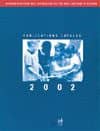
|
| FIGURE 2. The design of Oticon Delta allows for a sleek cosmetic appearance in addition to providing the optimum microphone spacing and the horizontal alignment of the microphones behind the ear. |
The following will focus on how exactly Delta tackles the problem speech understanding in complex listening situations for this population.
A High Performance System with a Focus on Sound Quality
A key to improved speech understanding in noise is to ensure that higher frequency speech information is made salient without any audible distortion. Placing the receiver in the ear canal allows the possibility to provide the extra high-frequency gain prescribed by the Clarity rationale and removes the need to compensate for the resonances created by the sound tubing (Figure 3). This tube resonance is present whether the tube is a conventional 2 mm wide tube or the new “thin tube” style, as it is related to tube length and not width.6
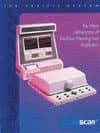
|
| FIGURE 3. Frequency response from Delta compared with a typical “thin tube” solution, showing the improved sound quality by placing the receiver in the ear canal. The typical tube resonance occurring at 2,500 Hz, 3,500 Hz, and 4,500 Hz can be avoided thereby improving sound quality. |
It is possible in modern fitting software to compensate for tube resonances by adjusting the calibration of the hearing aid. Unfortunately, once the dispensing professional changes the settings or tube length from those prescribed at the factory, these potentially disturbing resonances reappear. Therefore, the inherent limitations of traditional hearing aid design remain a problem, resulting in poorer sound quality. The best solution is to bypass the need for compensation and corrections and to place the receiver as close to the eardrum as possible.
Hearing fidelity to 8 kHz. A key concept in providing better speech understanding is to allow the user access to an extended bandwidth up to 8,000 Hz. In a study examining the benefits of increased bandwidth, 10 of 11 participants had significantly higher speech understanding when the bandwidth was increased from 6,000 Hz to 8,000 Hz. Examination of specific speech sounds showed an overall accuracy improvement, particularly for high frequency speech sounds such as /s/. This increased access to high frequency speech energy not only increases speech understanding in noise but also reduces the degree of perceive listening effort required during the day.
Occlusion-free listening. One of the needs of the younger population is for excellent sound quality in a cosmetically suitable solution. Previously, the primary way to achieve this was with a CIC. Unfortunately, while CICs provide the desired cosmetics, two problems arise. First, advanced functionality such as directional microphones are not compatible with the deep insertion and small footprint required. Second, even with a collection vent, the deep insertion of a CIC does not allow for a totally occlusion-free fitting. The resulting occlusion limits the acceptance of traditional technology for this very particular group of patients.
The optimum solution is one that combines the occlusion-free properties of a BTE with the sound quality and cosmetic benefits of a CIC. With Delta, the microphones and battery are placed behind the ear in an extremely discrete shell that connects to the Receiver In The Ear (RITE style). To ensure occlusion free listening, the open dome provides for the same acoustic response as an occlusion-free (eg, open) ear, thus providing total occlusion relief. By placing the microphone unit behind the ear in a small package, important technology unavailable in CICs, such as directional microphone systems, can be delivered. Therefore, no longer do people who have a high frequency hearing loss need to make compromises in the hearing solution provided.
Emphasizing speech understanding. The Clarity amplification rationale is designed for speech understanding, not hearing loss correction:
• A new starting point in developing a rational for people with minimal hearing loss. Typically, when developing a rationale or identity, we start with the person’s hearing loss and attempt to correct and restore loudness based on a hearing loss correction model. However, for people with minimal hearing loss, this approach does not provide the solution they are seeking. These people do not wish to have loudness compensation in all situations; what they wish for is additional clarity in difficult listening situations.
• Clarity enhancement. Providing better speech understanding requires that our amplification strategy provides extended high frequency amplification in difficult listening environments while retaining excellent sound quality in quiet. For quiet situations amplification is provided sparingly with less insertion gain than conventional rationales due to the benefit provided by mixing the amplified and direct sound sources. Similarly, this mixing of direct sound sources through the open dome removes the need for low frequency amplification and vent compensation. This eliminates the risk of upward spread of masking, and preserves good speech understanding in quiet situations. Delta is designed to compensate less, delivering a different mix of amplified and direct sound— essential ingredients for excellent sound quality.
Difficult listening situations are the focus of the Clarity rationale. Compared with typical wide dynamic range compression (WDRC) algorithms, the rationale does not try to fully correct for the hearing loss but instead focuses on the enhancement of speech information provided by delivering additional high frequency amplification (Figure 4). To preserve a natural sound quality, compression is sparingly applied. Fast release times (80-320 ms) combined with slower attack times (5-10 ms) match amplification speed to the good residual auditory capacity of the listeners. This allows the maximum preservation of speech cues and the opportunity to “listen in the dips.”

|
| FIGURE 4. For loud inputs (eg, speech in noise), speech understanding is improved by making use of the extended bandwidth to deliver extra high-frequency information. |
All of these factors—combined with the canal level receiver, open fitting, and advanced automatic systems—ensure optimum speech clarity in all difficult listening situations without the side effects obtained when attempting to fully correct for hearing loss.
Automatic Speech Enhancement with AI
Artificial Intelligence (AI) technology is designed to allow the hearing aid to make fully informed decisions about when and how the various automatic features, such as directionality and noise management, are to be applied.5,7 The advantage over prediction-based approaches is that systems are only enacted when they are shown to provide a significant benefit in terms of Speech-to-noise ratio (SpNR). This focus on SpNR ensures that the understanding of speech in noise remains the focus and that systems are not enabled needlessly.
Activity Analyzer. The Activity Analyzer collects the data recorded by Delta on the hearing instrument’s operation, analyzes and then displays it in the Genie 7.0 fitting software.8
In addition to general usage data, the Envirogram9 allows the dispensing professional to quickly visualize the listener’s auditory ecology. The clinician can then use the Envirograms to demonstrate to the client how the multiband adaptive directionality and TriState noise management have benefited the client in their actual daily listening situations rather than needing to rely on hypothetical examples. Similarly, the clinician can use them to explain the types of listening situations the client regularly experiences and how the instrument provides specific solutions for their listening challenges. Therefore, the Activity Analyzer becomes an integrated part of the fitting process through quick and easy demonstration of benefit to the client using their actual listening experiences.
Multiband adaptive directionality. Directional microphones are the only proven and universally accepted method for maximizing speech understanding in noise.10 Thus, one of the key design decisions was to ensure that directionality was not only maintained but enhanced for the high frequencies.
While directional benefit relies on a physical separation between two microphones, having too great a distance between microphones results in loss of directivity in the high frequencies. For Delta, it was determined that the optimum port placement was 9 mm, as opposed to the usual 12-13 mm found in most BTE instruments. This smaller port separation allows directionality to be maintained at the theoretical limit of 6 dB throughout the high frequency region (Figure 5). Similarly, the instrument’s design ensures a good horizontal position of microphones and ensures the correct distance between the microphones (Figure 2).

|
| FIGURE 5. Graph of the directivity index (DI) by frequency, indicating the preservation of high frequency directionality in Delta (eg, a microphone port spacing of 9 mm) versus a standard BTE shell casing. |
To further maximize directionality, it is crucial to recognize that complex listening situations involve multiple noise sources that differ by frequency. Therefore, it’s best to have an adaptive directionality system that not only tracks and adjusts the polar response to provide the maximum possible signal-to-noise ratio, but also adjusts its response across three separate frequency regions to attenuate multiple noise sources simultaneously.
Wind noise is often a problem for people with a hearing loss, particularly for those with mild-to-moderate high-frequency losses. Previous solutions have focused on attempting to digitally “process out” the effects of wind noise by applying noise reduction or notch filtering techniques. Unfortunately, these strategies apply other processing artifacts and are rarely successful. A better solution is to reduce the velocity of the wind before it reaches the microphones. In Delta, an exchangeable top “grid” above the microphones acts as a combined wind and dirt protector. This grid slows down the velocity of the air in front of the microphones, thus lowering the impact of wind.
While directionality provides many advantages, it is not the solution for every listening environment.11,12 Therefore, Delta is driven by Artificial Intelligence technology that constantly calculates the resulting signal-to-noise benefit for any give listening situation and makes sure that directionality provides a benefit prior to enabling the system. This removes the annoyance of the system making incorrect choices such as cancelling important signals from behind the listener. Similarly, the wearing of full-time directional system provides an audible distortion to the listener’s sound scene thus providing further loss of transparency.
It is critical in a fully open hearing aid to ensure that the theoretical benefits of directionality are realized. The directional performance of Delta was analyzed in a group of hearing-impaired adults in a diffuse noise field with speech information from the front speaker for surround (omni) and directional settings. Figure 6 demonstrates an SNR improvement of 2.95 dB, providing significant improvements in speech understanding in noise. Therefore, as indicated by previous studies,13,14 if a system is optimally designed, it is possible to ensure directional benefit even with a totally open fitting.
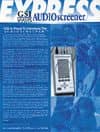
|
| FIGURE 6. Results from the Dantale-II speech perception test in noise. This shows the significant directional benefit the participants received with the Delta hearing instrument. |
TriState Noise Management. TriState Noise management is designed to provide the best possible sound quality and comfort in all situations. Unique to this system is the combination of VoiceFinder speech detector, which detects the synchronicity unique to the human voice,15 and a noise detector evaluating the modulation depth. This combination is designed to ensure that noise reduction can be applied separately for noise only versus speech in noise listening situations.
When listening to speech in noisy situations, the amplification is managed so that speech information is never removed. Conversely, for noise-only situations, full noise reduction is implemented so that listening comfort is ensured. Similar to the Dynamic Identity in Oticon Syncro, the transition times between states have been reduced so that the system works as fast as possible to ensure the listener every opportunity to “listen in the dips” and that noises are attenuated as fast as possible for maximum comfort no matter how difficult the listening situation.
System Performance
Good design by itself cannot guarantee that the solution will meet the needs of the listener. It is therefore essential to carefully evaluate the performance of Delta against other more conventional solutions.
Figure 7 illustrates the reported performance benefits of a group of hearing aid users who were wearers of conventional premium digital hearing aids with advanced features, such as multiple channel non-linear amplification, directionality, and noise reduction. The new aid provides a significant improvement over traditional digital instruments. Importantly, neither speech understanding in noise or listening comfort have been compromised due to the open fitting approach. In fact, both have been maximized, leading to improved user satisfaction.
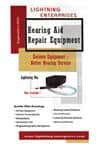
|
| FIGURE 7. Comparison of performance with Delta versus conventional premium hearing aids on the dimensions of clarity of speech, listening comfort, and overall listening. |
An important consideration in the amplification needs of people with moderate hearing loss is, “How does the hearing instrument decrease listening effort in difficult listening situations?” To answer this question, a test of listening effort developed by Oticon’s Research Center in Eriksholm was used.16 This investigation examined the participant’s ratings of the degree of listening effort required to understand speech in noise (Figure 8). The results indicate that Delta significantly reduced the degree of listening effort required in difficult situations. Similarly, the required effort also decreased when the bandwidth was extended from 6,000 Hz to 8,000 Hz. Therefore, the provision of extended high-frequency bandwidth combined with the Clarity rationale provides significant benefit in terms of reducing the client’s perception of listening effort.
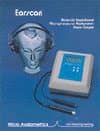
|
| FIGURE 8. Reduction in the client’s perception of listening effort required when listening to speech in difficult listening situations due to improvements provided by both the Clarity rationale and the extended high-frequency bandwidth. |
Conclusion
Delta embodies a new design for people with a mild-to-moderate high-frequency hearing loss. Importantly, the cosmetic benefits and size do not come at the cost of other features or sound processing options. This approach is audiologically novel: the rationale is not to fully correct for the hearing loss, but to focus on providing the best possible speech understanding in difficult listening situations. In this way, the needs of people who have significant low frequency hearing with a mild to moderate high frequency hearing loss are met.
| This article was submitted to HR by Mark C. Flynn, PhD, director of product concept definition at Oticon A/S, Smørum, Denmark. Correspondence can be addressed to HR or Mark C. Flynn, PhD, Oticon A/S, Kongebakken 9, Smørum, DK 2740, Denmark; e-mail: [email protected]. |
References
1. Kochkin S. MarkeTrak VI: 10-year customer satisfaction trends in the US hearing instrument market. The Hearing Review. 2002;9(10):14-25,46.
2. Souza PE, Bishop RD. Improving audibility with nonlinear amplification for listeners with high-frequency loss. J Am Acad Audiol. 2000;11(4):214-23.
3. Turner CW, Henry BA. Benefits of amplification for speech recognition in background noise. J Acoust Soc Am. 2002;112(4):1675-80.
4. Sørensen TW. Entering the unit growth era: Carnegie’s sixth annual hearing aid industry report. Copenhagen, Denmark: Carnegie Research; 2004:52.
5. Flynn MC. Maximizing the Voice-to-Noise ratio (VNR) via Voice Priority Processing. The Hearing Review. 2004;11(4):54-59.
6. Chasin M. The etiology of the REUG: Did we get it completely right? Hear Jour. 2005;58(12):22-24.
7. Flynn MC, Lunner T. Clinical verification of a hearing aid with Artificial Intelligence. Hear Jour. 2005;58(2):34-38.
8. Flynn MC. Datalogging: A new paradigm in the hearing instrument fitting process. The Hearing Review. 2005;12(3):52-57.
9. Flynn MC. Envirograms: Bringing greater utility to datalogging. The Hearing Review. 2005;12(11):32-28.
10. Bentler RA. Effectiveness of directional microphones and noise reduction schemes in hearing aids: a systematic review of the evidence. J Am Acad Audiol. 2005;16(7):473-84.
11. Walden BE, Surr RK, Cord MT, Dyrlund O. Predicting hearing aid microphone preference in everyday listening. J Am Acad Audiol. 2004;15(5):365-96.
12. Ricketts T, Henry P, Gnewikow D. Full time directional versus user selectable microphone modes in hearing aids. Ear Hear. 2003;24(5):424-39.
13. Flynn MC. Thin-tube open fittings: Preferred patient populations and study results. The Hearing Review. 2006;13(3):62-95.
14. Flynn MC. Maintaining the directional advantage in open fittings. The Hearing Review. 2004;11(11):32-36.
15. Elberling C. About the VoiceFinder. News From Oticon: Audiological Research Documentation. 2002;3:1-11.
16. Behrens T, Sundewall E. Pilot test of a method for measuring listening effort. ERH Report 052-08-03, 2005.



